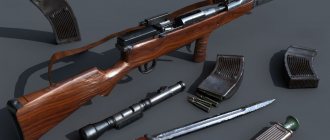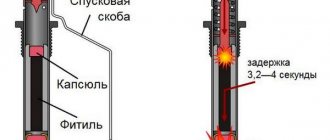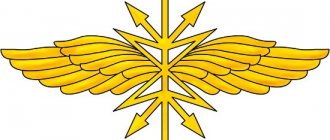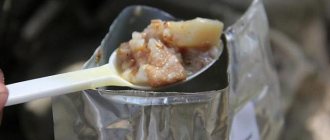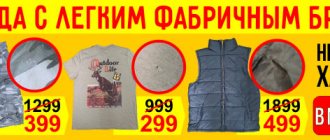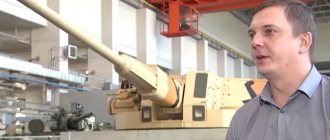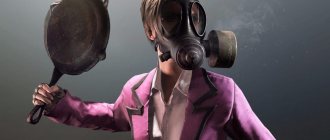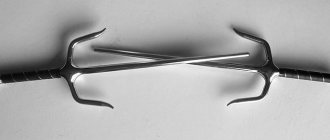Wehrmacht women's uniform
After the outbreak of hostilities in the European TBD (theater of combat), there was a need to expand support units and personnel.
These positions were well suited to be filled by female military personnel. Therefore, by OKW order No. 1085 of 01.10.1940, first the Women's Auxiliary Communications Service (from German: Nachrichtenhelferinnen) was created, and then other auxiliary services. Army uniforms were provided for female soldiers. The Waffen-SS women's uniform consisted of a gray jacket and skirt, as well as a black cap with the image of the German eagle.
Female SS uniform
The most famous female member of the SS was probably Irma Grese. Rape by her own father at the age of 12 (according to other sources, brother, uncle), hard village life greatly influenced the consciousness of the young girl, giving birth to sadistic tendencies in her soul. Having voluntarily joined the auxiliary units of the SS in 1942, she was appointed as a guard at the Ravensbrück concentration camp. Then she was transferred several more times to other camps. And everywhere she happily tortured female prisoners of the concentration camp, she loved to shoot the prisoners she chose. The list of tortures used by her is very extensive. In fact, torture gave her sexual pleasure. The torture was followed by sexual orgies with the guards and commanders of the concentration camps. In 1945, she was captured by the British, sentenced to death and hanged in prison.
Irma Grenze - "The Blonde Devil"
Uniforms and insignia of the Wehrmacht
The German army had several types of uniforms and clothing. Each soldier had to independently monitor the condition of his weapons and uniform. They were replaced in accordance with the established procedure or in case of serious damage during the training process. Military uniforms lost color very quickly due to washing and daily brushing.
The soldiers' shoes were thoroughly inspected (at all times, bad boots were a serious problem).
Since the formation of the Reichswehr (German armed forces in the period 1919 - 1935), the military uniform has become unified for all existing German states. Its color is “feldgrau” (translated as “field grey”) - a wormwood shade with a predominant green pigment.
A new uniform (the uniform of the Wehrmacht - the armed forces of Nazi Germany during the period 1935 - 1945) was introduced along with a new model of steel helmet. The ammunition, uniforms and helmets did not differ in appearance from their predecessors (existing in the Kaiser's era).
At the whim of the Fuhrer, the attire of the military personnel was emphasized by a large number of various elements of heraldry (emblems, signs, stripes, piping, badges, etc.). Devotion to National Socialism was expressed by applying the black, white and red imperial cockade and the tricolor shield on the right side of the helmet. The appearance of the imperial tricolor dates back to mid-March 1933. In October 1935, the uniform was supplemented by an imperial eagle holding a swastika in its claws. At this time, the Reichswehr was renamed the Wehrmacht (photo was shown earlier).
This topic will be considered in relation to the Ground Forces and SS troops.
What is special about the Wehrmacht uniform?
The uniform of the German army at the beginning of World War II compared favorably with the uniform of other belligerent armies. In the Wehrmacht, they were the first to indicate belonging to a participating country (eagle), the types of troops were clearly designated, and there was no confusion with the ranks of officers for the soldiers of their army.
However, frosty Russia quickly revealed the shortcomings of the uniform: there are cold overcoats, especially when the Red Army en masse changed into quilted jackets. That is why it was so often possible to see captured Germans dressed haphazardly in the winter. In the summer, it was terribly hot in field jackets, which forced the soldiers to unbutton and roll up their sleeves. This fact received a lot of attention in Soviet cinema.
But the author cannot fail to mention the following fact. The color, appearance and shape of the Wehrmacht is very well ingrained in the genes of the Russian people. The author somehow accidentally saw people in the uniform of Hitler’s army, and although he had never seen such a uniform in person in his life, there was a very clear message from the subconscious that he had to go and kill them. Due to the lack of a machine gun at hand, the author approached the people in the feldgrau almost unarmed and found out that they were actors from the film set. Therefore, the heart let go of hatred, and everyone remained unharmed.
Wehrmacht uniform
Military colors of the Wehrmacht ground forces
In Germany, branches of the military were traditionally designated by the corresponding colors of edgings and buttonholes, hats and uniforms, and so on. They changed quite often. At the beginning of World War II, the following color division was in effect:
- White - infantry and border guards, financiers and treasurers.
- Scarlet - field, horse and self-propelled artillery, as well as general's piping, buttonholes and stripes.
- Raspberry or carmine red - non-commissioned officers of the veterinary service, as well as buttonholes, stripes and shoulder straps of the Headquarters and General Staff of the High Command of the Wehrmacht and ground forces.
- Pink – anti-tank self-propelled artillery; edging of details of tank uniforms; gaps and selection of buttonholes of service jackets of officers, gray-green jackets of non-commissioned officers and soldiers.
- Golden yellow - cavalry, reconnaissance units of tank units and scooters.
- Lemon yellow – signal troops.
- Burgundy – military chemists and courts; smoke curtains and multi-barrel rocket-propelled “chemical” mortars.
- Cherny - engineering troops (sapper, railway, training units), technical service. Tank unit sappers have black and white edging.
- Cornflower blue - medical and sanitary personnel (except generals).
- Light blue – edgings of motor transport parts.
- Light green – military pharmacists, rangers and mountain units.
- Grass Green – motorized infantry regiment, motorcycle units.
- Gray - army propagandists and officers of the Landwehr and reserve (edging on shoulder straps in military colors).
- Gray-blue - registration service, officials of the American administration, specialist officers.
- Orange - military police and officers of the engineering academy, recruiting service (edging color).
- Purple – military priests
- Dark green – military officials.
- Light red – quartermasters.
- Blue - military lawyers.
- Yellow - horse reserve service.
- Lemonny – feldpost.
- Light brown - recruit training service.
Special differences between the SS form and other German forms
The SS were probably the first to introduce so-called camouflage patterns. Moreover, the Flektarn pattern introduced by the SS units is still used by the Bundeswehr. This type of used camouflage is supplied all over the world: in both Russia and Ukraine you can see people wearing camouflage of this color. To be fair, it should be noted that the modern name “Flektarn” was introduced in the 1970s. The camouflage was originally called "Platanenmunster".
Reversible camouflage jacket in platanenmuster autumn side out
The camouflage uniform was double-sided - spring-summer and autumn-winter colors. Summer colors were green, winter colors were closer to variations of orange. Badges indicating rank were sewn onto the uniform. The color of the stripes is green.
At first, the SS cockade was considered the “Death’s Head” (der Totenkopf), however, after the formation of detachments, and later divisions with this name, the cockade was changed to the imperial image of an eagle.
Untersturmführer (lieutenant) of the SS troops in a camouflage jacket in platanenmuster colors with the summer side facing out
Features
The SS uniform had a number of distinctive features that are easily remembered even now, after the disbandment of the organization:
- The SS emblem of two German "Sig" runes was used on uniform insignia. Only ethnic Germans - Aryans - were allowed to wear runes on their uniforms; foreign members of the Waffen SS did not have the right to use this symbolism.
- “Death's Head” - at first, a metal round cockade with the image of a skull was used on the cap of SS soldiers. Later it was used on the buttonholes of soldiers of the 3rd Tank Division.
- The red armband with a black swastika on a white background was worn by members of the SS and stood out significantly against the background of the black dress uniform.
- The image of an eagle with outstretched wings and a swastika (formerly the coat of arms of Nazi Germany) eventually replaced skulls on cap badges and began to be embroidered on the sleeves of uniforms.
The Waffen SS camouflage pattern differed from the Wehrmacht camouflage. Instead of the conventional pattern design with parallel lines applied, creating the so-called “rain effect,” woody and plant patterns were used. Since 1938, the following camouflage elements of the SS uniform have been adopted: camouflage jackets, reversible covers for helmets and face masks. On camouflage clothing it was necessary to wear green stripes indicating rank on both sleeves, however, for the most part this requirement was not observed by officers. During campaigns, a set of stripes was also used, each of which denoted one or another military qualification.
History of Wehrmacht and SS uniforms
Until 1936, Wehrmacht soldiers and officers also wore the uniform of the Reichswehr (German army during the First World War) with the national emblem (Hoheitszeichen) sewn onto the chest - the eagle with a swastika, well-known from the films. Only in 1936 did the transition to a new form officially take place.
The basis of the uniform was the military uniform (Waffen Rock) of the 1936 model. It was a tunic with five buttons and patch pockets in the color “Feldgrau” (field gray) with piping in the color of the military branch along the side and collar:
- carmine red color - War Ministry and Veterinary Service;
- crimson color - General Staff;
- white - infantry;
- grass-green color - motorized infantry (panzergrenadiers);
- light green color - mountain infantry, rangers;
- pink color - tank troops and anti-tank artillery (for combined arms uniforms);
- red - artillery;
- burgundy color - chemical defense parts and rocket artillery parts;
- black color - engineering troops;
- golden yellow color - cavalry and reconnaissance;
- copper-yellow color - motorized reconnaissance;
- lemon yellow color - signal troops;
- orange color - field gendarmerie and personnel replenishment bodies (military registration and enlistment offices);
- grayish-blue color - vehicle parts;
- cornflower blue - medical service,
- purple - priests of the Catholic and Lutheran churches.
As can be seen from the list, it was not difficult to get confused in such diversity. In the memoirs of one of the tank crews there is an episode when he captured one of the Wehrmacht generals, but he was not given an order, but only a medal “For Courage.” However, from the description it is clear that he captured a senior officer of the OKW General Staff (from Hauptmann to Oberst), and the reason for the confusion was that the General Staff officers wore general stripes on their uniform trousers. Moreover, an officer of the general staff did not mean at all that this was an officer from the main headquarters of the troops, but simply that this person served at the headquarters. And the headquarters can be at both the regiment and the division.
Jacket model 1936
However, Nazi Germany did not only have an army. The SS organization stands out separately (Schutzstaffeln - “security squads”). Initially formed as part of the assault troops (SA, Brown Shirts, NSDAP combat units), the SS quickly became a separate structure.
After the “night of long knives,” which ended with the destruction of the top of the SA and the separation of the SS into a separate structure, the SS became the main striking force of the ruling party and began the formation of combat units. In 1940, these units received the name SS Troops (die Waffen-SS). Also in service remained the general SS (Allgemeine SS), which did not take part in hostilities, but were used on the territory of the Third Reich. Service in the general SS was not considered military service.
In 1930, SS personnel received the infamous black uniform with runes. Only verified true Aryans could wear runes in their buttonholes. Other national units of the SS troops did not have the right to wear them. Instead of runic signs, national buttonholes or unit buttonholes were used.
The highest ranks of the Wehrmacht and SS, as well as those awarded the Knight's Cross, had the right not to fasten the top buttons of their overcoat so that their rank awards were visible.
It is also impossible not to mention Todt's form of organization. After the Anschluss of Czechoslovakia, the uniform of its army was used to outfit the organization's units. The trophy uniform was very different from the army one, even the color was olive, and not “field gray”.
Buttonholes of Todt units
The most famous uniform of the elite Die Waffen-SS unit
Dress uniform of Die Waffen-SS officers
Die Waffen-SS field uniform
Shoulder straps in German military uniform
They had a dual purpose: as a means of determining rank and as carriers of a unitary function (fastening various types of equipment on the shoulder).
Shoulder straps of the Wehrmacht (rank and file) were made of simple cloth, but with edging, which had a certain color corresponding to the branch of the army. If we take into account the shoulder straps of a non-commissioned officer, we can note the presence of an additional edging consisting of braid (width - nine millimeters).
Until 1938, there was a special army shoulder strap exclusively for field uniforms, which was worn by all ranks below officer. It was entirely dark blue-green with a slightly tapered end towards the button. There was no fixed edging on it corresponding to the color of the branch of service. Wehrmacht soldiers, in order to highlight the color of the military branches, embroidered insignia (numbers, letters, emblems) on them.
The officers (lieutenants, captains) had narrower shoulder straps, which looked like two intertwined strands made of flat silver “Russian braid” (the strand is woven in such a way that thinner threads are visible). All strands were sewn onto the flap in the color of the branch of the military that is the basis of this shoulder strap. A special bend (U-shaped) of the braid in the place of the button hole helped create the illusion of eight strands of it, when in fact there were only two.
Wehrmacht (staff officer) shoulder straps were also made using Russian braid, but in such a way as to demonstrate a row consisting of five separate loops located on either side of the shoulder strap, in addition to the loop around the button located at the top of it.
The general's shoulder straps had a distinctive feature - “Russian braid”. It was made from two separate gold strands, twisted on both sides with one silver ribbed thread. The weaving method implied the appearance of three knots in the middle and four loops on each side in addition to one loop located around the button at the top of the shoulder strap.
Wehrmacht officials, as a rule, had the same shoulder straps as those of the active army. However, they were still distinguished by the slight introduction of a thread of dark green braid and various kinds of emblems.
It would not be amiss to remind you once again that shoulder straps are insignia of the Wehrmacht.
Prerequisites for the formation of the SS
In March 1923, Hitler was concerned that the leaders of the assault troops (SA) were beginning to feel their power and importance in the NSDAP party. This was due to the fact that both the party and the SA had the same sponsors, for whom the goal of the National Socialists was important - to carry out a coup, and they did not have much sympathy for the leaders themselves. Sometimes it even came to an open confrontation between the leader of the SA, Ernst Röhm, and Adolf Hitler. It was at this time, apparently, that the future Fuhrer decided to strengthen his personal power by creating a detachment of bodyguards - the headquarters guard. He was the first prototype of the future SS. They had no ranks, but insignia had already appeared. The abbreviation for the Staff Guard was also SS, but it came from the German word Stawsbache. In every hundred of the SA, Hitler allocated 10-20 people, supposedly to protect high-ranking party leaders. They personally had to take an oath to Hitler, and their selection was carried out carefully.
A few months later, Hitler renamed the organization Stosstruppe - this was the name of the shock troops of the Kaiser's army during the First World War. The abbreviation SS nevertheless remained the same, despite the fundamentally new name. It is worth noting that the entire Nazi ideology was associated with an aura of mystery, historical continuity, allegorical symbols, pictograms, runes, etc. Even the symbol of the NSDAP - the swastika - Hitler took from ancient Indian mythology.
Stosstrup Adolf Hitler - the Adolf Hitler strike force - acquired the final features of the future SS. They did not yet have their own ranks, but insignia appeared that Himmler would later retain - a skull on their headdress, a black distinctive color of the uniform, etc. The “Death's Head” on the uniform symbolized the readiness of the detachment to defend Hitler himself at the cost of their lives. The basis for future usurpation of power was prepared.
Buttonholes and shoulder straps of generals
As mentioned earlier, Wehrmacht generals wore shoulder straps, which were woven using two thick gold-metal strands and a silver soutache between them.
They also had removable shoulder straps, which (as in the case of the ground forces) had a scarlet cloth lining with a special figured cutout running along the edge of the harness (their lower edge). And the bent and sewn-in shoulder straps were distinguished by a straight lining.
Wehrmacht generals wore silver stars on their shoulder straps, but there was some difference: major generals had no stars, lieutenant generals had one, a general of a certain type of troops (infantry, tank troops, cavalry, etc.) had two, oberst general - three (two stars located next to each other at the bottom of the shoulder strap and one slightly above them). Previously, there was such a rank as Colonel General in the position of Field Marshal General, which was not used at the beginning of the war. The shoulder strap of this rank had two stars, which were located in its upper and lower parts. A field marshal could be identified by the crossed silver batons along his shoulder straps.
There were also exceptional moments. So, for example, Gerd von Rundstedt (Field Marshal General, who was removed from command due to the defeat near Rostov, chief of the 18th Infantry Regiment) wore the regiment number on his shoulder straps on top of his field marshal's batons, as well as the white and silver ceremonial buttonholes of an infantry officer on his collar troops in return for the richly ornamented gold buttonholes embroidered on a scarlet cloth flap (size 40x90 mm) for generals. Their design was found back in the days of the Kaiser’s army and the Reichswehr; with the formation of the GDR and the Federal Republic of Germany, it also appeared among generals.
From the beginning of April 1941, elongated buttonholes were introduced for field marshals, which had three (instead of the previous two) ornamental elements and shoulder straps made of golden thickened cords.
Another sign of the general's dignity is stripes.
The field marshal could also carry in his hand a natural staff, which was made of particularly valuable wood, individually decorated, generously inlaid with silver and gold and decorated with reliefs.
SS officers
Let's consider the features of the officer corps. The SS Hauptsturmführer and lower ranks no longer had oak leaves on their buttonholes. Also on their right buttonhole was the SS coat of arms - a Nordic symbol of two lightning bolts.
Hierarchy of SS officers:
| SS rank | Lapels | Compliance in the military |
| SS Oberführer | Double oak leaf | No match |
| Standartenführer SS | Single sheet | Colonel |
| SS Obersturmbannführer | 4 stars and two rows of aluminum thread | Lieutenant colonel |
| SS Sturmbannführer | 4 stars | Major |
| SS Hauptsturmführer | 3 stars and 4 rows of thread | Hauptmann |
| SS Obersturmführer | 3 stars and 2 rows | Chief Lieutenant |
| SS Untersturmführer | 3 stars | Lieutenant |
I would like to immediately note that the German stars did not resemble the five-pointed Soviet ones - they were four-pointed, rather reminiscent of squares or rhombuses. Next in the hierarchy are the SS non-commissioned officer ranks in the Third Reich. More details about them in the next paragraph.
Non-commissioned officers
Hierarchy of non-commissioned officers:
| SS rank | Lapels | Compliance in the military |
| SS Sturmscharführer | 2 stars, 4 rows of thread | Staff sergeant major |
| Standartenoberunker SS | 2 stars, 2 rows of thread, silver edging | Chief Sergeant Major |
| SS Hauptscharführer | 2 stars, 2 rows of thread | Oberfenrich |
| SS Oberscharführer | 2 stars | Sergeant Major |
| Standartenjunker SS | 1 star and 2 rows of thread (differing in shoulder straps) | Fanenjunker-sergeant-major |
| Scharführer SS | Non-commissioned sergeant major | |
| SS Unterscharführer | 2 threads at the bottom | Non-commissioned officer |
Buttonholes are the main, but not the only insignia of ranks. Also, the hierarchy could be determined by shoulder straps and stripes. SS military ranks were sometimes subject to change. However, above we presented the hierarchy and the main differences at the end of World War II.
Literature
- Adolf Schlicht, John R. Angolia.
Die deutsche Wehrmacht, Uniformierung und Ausrüstung 1933—1945 Vol. 1: Das Heer (ISBN 3613013908), Motorbuch Verlag, Stuttgart 1992 - Vol. 3: Die Luftwaffe (ISBN 3-613-02001-7), Motorbuch Verlag, Stuttgart 1999
. San Jose, CA: R. James Bender Publishing, 1994. ISBN 978-0-912138-55-8
. Schiffer Publishing, Ltd. 2000. ISBN 978-0-7643-0046-2
, Ian Allan Publishing, Inc. 2002. ISBN 0-7110-2905-9
1-6 . MotorbooksIntl. 1997. ISBN 978-1-85915-048-1
. M.: Astrel, AST, 2007
New development under Heinrich Himmler
The SS, despite the fact that it was personally subordinate to Hitler and the Reichsführer SS - from November 1926, this position was held by Josef Berthold, was still part of the SA structures. The attitude towards the “elite” in the assault detachments was contradictory: the commanders did not want to have SS members in their units, so they shouldered various responsibilities, for example, distributing leaflets, subscribing to Nazi propaganda, etc.
In 1929, Heinrich Himmler became the leader of the SS. Under him, the size of the organization began to grow rapidly. The SS turns into an elite closed organization with its own charter, a mystical ritual of entry, imitating the traditions of medieval knightly Orders. A real SS man had to marry a “model woman.” Heinrich Himmler introduced a new mandatory requirement for joining the renewed organization: the candidate had to prove evidence of purity of descent in three generations. However, that was not all: the new Reichsführer SS ordered all members of the organization to look for brides only with a “pure” genealogy. Himmler managed to nullify the subordination of his organization to the SA, and then completely leave it after he helped Hitler get rid of the leader of the SA, Ernst Röhm, who sought to turn his organization into a mass people's army.
The bodyguard detachment was transformed first into the Fuhrer's personal guard regiment, and then into the personal SS army. Ranks, insignia, uniforms - everything indicated that the unit was independent. Next, we’ll talk in more detail about insignia. Let's start with the rank of the SS in the Third Reich.
The emergence of Strumstaffel – SS
After the Beer Hall Putsch, Hitler went to prison, where he remained until December 1924. The circumstances that allowed the future Fuhrer to be released after an attempted armed seizure of power are still unclear.
Upon his release, Hitler first of all banned the SA from carrying weapons and positioning itself as an alternative to the German army. The fact is that the Weimar Republic could only have a limited contingent of troops under the terms of the Versailles Peace Treaty after the First World War. It seemed to many that armed SA units were a legitimate way to avoid restrictions.
At the beginning of 1925, the NSDAP was restored again, and in November the “shock detachment” was restored. At first it was called Strumstaffen, and on November 9, 1925 it received its final name - Schutzstaffel - “cover squadron”. The organization had nothing to do with aviation. This name was invented by Hermann Goering, a famous fighter pilot of the First World War. He loved to apply aviation terms to everyday life. Over time, the “aviation term” was forgotten, and the abbreviation was always translated as “security detachments.” It was headed by Hitler's favorites - Schreck and Schaub.
Marks of Excellence
The ranks of the Wehrmacht differed depending on the type of troops. That is, for example, the description was not added - senior lieutenant of the medical service, but there was Oberarzt - senior doctor, although the army senior lieutenant was called Oberleutnant.
The shoulder straps of soldiers and sergeants differed from those of officers. Against the background of clean soldier's shoulder straps, twisted officer's, and even two-color general's shoulder straps were very clearly visible. Therefore, officers on the front line had to hide their shoulder straps, turning them inside with insignia, or even remove them altogether.
Waffen-SS officers had SS insignia on one buttonhole and rank insignia on the other.
Marks of Excellence
Personal identification mark
It looked like an oval aluminum token with three longitudinal slots, which served so that at a certain moment (the hour of death) it could be broken into two halves (the first, with two holes, was left on the body of the deceased, and the second half with one hole was given to headquarters).
Wehrmacht soldiers wore this identification mark, usually on a chain or neck cord. The following was stamped on each token: blood type, badge number, battalion number, regiment number where this badge was issued for the first time. This information was supposed to accompany the soldier throughout his entire service life, if necessary supplemented by similar data from other units and troops.
An image of German military personnel can be seen in the photo “Wehrmacht Soldier” shown above.
